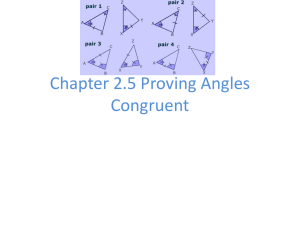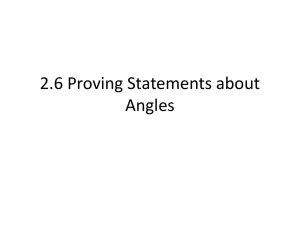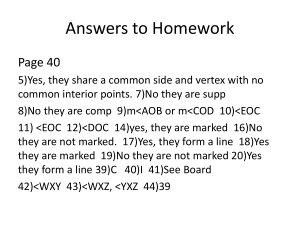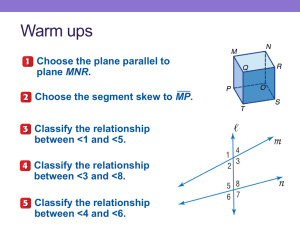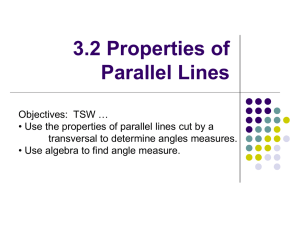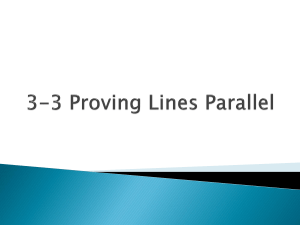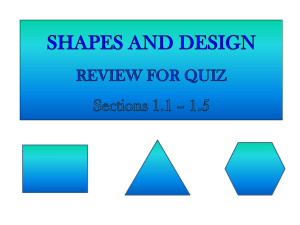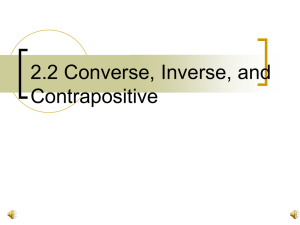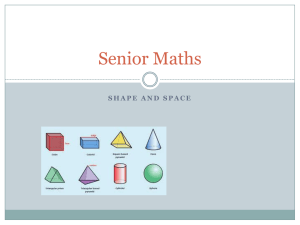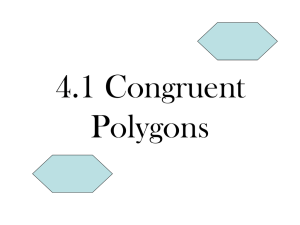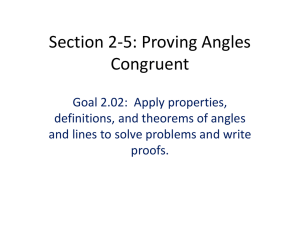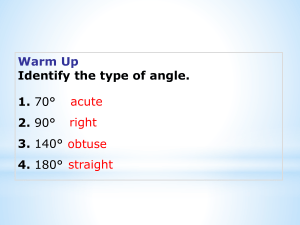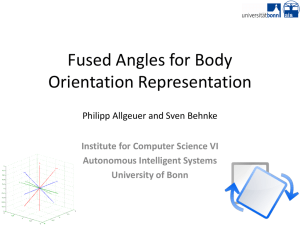Geometry 8-25 - Vision Charter School
advertisement
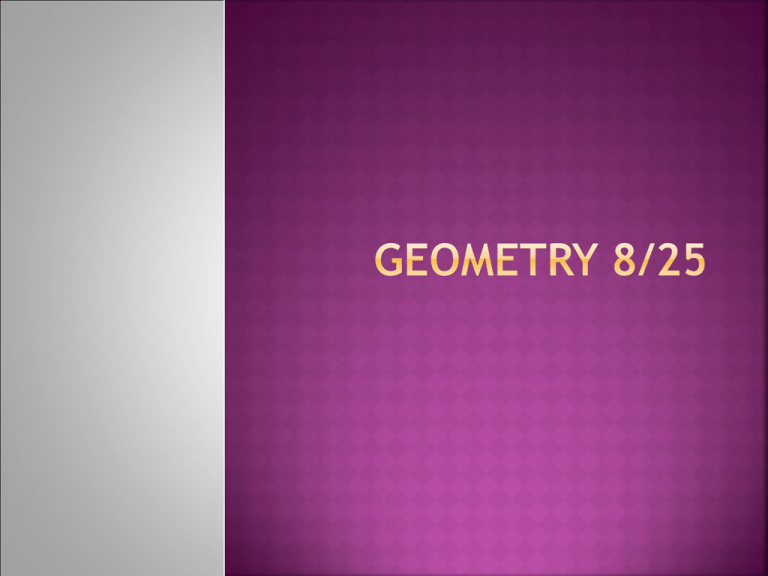
are two line that intersect to form right angles of a segment is a line, segment or ray that is perpendicular to a segment at its midpoint is a ray that divides an angle into two congruent angles Deductive Reasoning is a process of reasoning logically from given facts to a conclusion. Addition Property of equality if a=b then a+c=b+c Subtraction Property of equality if a=b then a-c=b-c Multiplication Property of equality if a = b then ac = bc Division Property of equality if a=b then a/c = b/c c≠0 Substitution Property– if a=b, then b can replace a in any expression Distributive Reflexive Property – a(b+c) = ab + ac Property AB = AB Symmetric Property if AB = CD then CD = AB Transitive Property if AB = CD & CD = EF then AB = EF Draw two intersecting lines. Fold the sides of <1 onto <2. What do you notice? Fold the sides of <3 onto <4. what do you notice? Make a conjecture about the angles formed by two intersecting lines. 1 3 4 2 1 3 4 2 Vertical angles – two whose sides are opposite rays. Adjacent angles – two coplanar angles with a common vertex, no common interior points. Complementary angles – two angles , the sum of whose measure is 90. Supplementary angles – two angles, the sum of whose measures is 180. Vertical Angles Theorem – Vertical angles are congruent. Congruent Supplements Theorem – If two angles are supplements of congruent angles (or of the same angle), then the two angles are congruent. Congruent Complements Theorem – If two angles are complements of congruent angles (or of the same angle, then the two angles are congruent.

